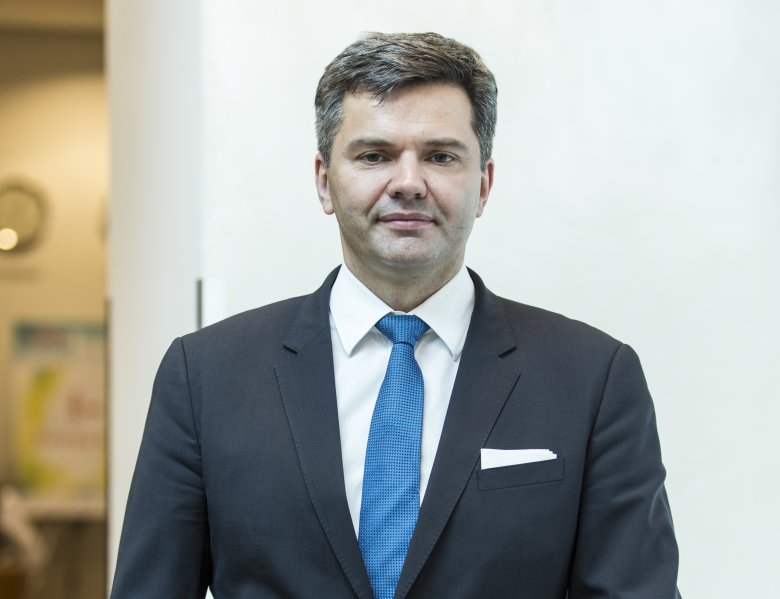- April 26, 2025

On March 17 in New Orleans, during the Congress of the American College of Cardiology, the latest research results confirming the safety of transcatheter valve TAVI aortic valve treatment under local anesthesia were announced. Prof. Dudek and his team have reached a breakthrough, thanks to which this method will more and more often accompany traditional cardiac surgery with chest opening in hybrid rooms.
Cardiosurgical procedures of treatment of acquired valve defects, especially the most common of them, i.e. aortic valve stenosis, are the standard of medical procedures. However, with the development of less invasive techniques, percutaneous aortic valve implantation, the TAVI method, most often with access through the groin and under local anesthesia, has been used for several years in high-risk groups of classical cardiac surgeries.
After hypertension and myocardial infarction, aortic stenosis, i.e. aortic valve stenosis, is the third most frequently detected heart disease in Poland and worldwide. This is the most common valvular heart defect acquired with age and most often concerns people over 65-75 years of age. The disease is a gradual but massive calcification of the petals with impaired mobility, which leads to stenosis of the valve and hinders blood flow from the left ventricle. Critical aortic stenosis can lead to heart failure and premature death if left untreated.
On March 17th this year, 10 years after the first TAVI treatment in Poland, in Krakow, Professor Dariusz Dudek, cardiologist and his team have reached a breakthrough in world cardiology. At the Congress of the American College of Cardiology in New Orleans, the results of the latest groundbreaking scientific research were announced, which confirmed that the once pioneering transcatheter aortic stenosis treatment of TAVI is now safer than the standard cardiac surgical treatment in patients with low surgical risk.
Two studies published in the prestigious New England Journal of Medicine extend the indications for TAVI not only to the high and medium risk group of cardiac surgery, but also suggest that this method should also be considered for low-risk patients, i.e. for a very broad spectrum of patients with aortic valve stenosis. These studies not only documented the comparable value of both therapeutic methods, but also, to the surprise of researchers, indicated TAVI as a technique with a higher safety profile in short-term observation.
- This is a great success for cardiology and cardiac surgery. This is a historic moment in which traditional cardiac surgery with chest opening will more and more often be accompanied by transcatheter treatment of the aortic valve - emphasizes the cardiologist, Prof. Dariusz Dudek. - On the basis of the latest reports, TAVI becomes the preferred treatment method in cardiology and cardiac surgery in suitably qualified groups of patients. Professor Eugeni Braunwald, the legend of world cardiology, emphasized at the ACC Congress in the USA that March 2019 will be remembered as a breakthrough in the history of cardiology and world cardiosurgery. It is a great day, we are creating a new era in medicine, a real breakthrough in the treatment of heart diseases - adds the professor.
So far, the method of treatment has been cardiac surgery with chest opening, SAVR (Surgical Aortic Valve Replacement), which is a heavy burden for the patient, especially in old age. An alternative to this method was the Transcathether Aortic Valve Implantation (TAVI) method, introduced by A. Cirbier in France in 2002. Its essence is to implant a biological valve with a catheter, a special tube inserted into the heart through the vessels without opening the chest. This breakthrough technique was initially considered as an alternative only for "non-operative" patients, i.e. "too sick" or "too fragile" biologically to survive the classical cardiac surgery on the open heart.
Aortic valve implantation using the minimally invasive, transcatheter method was performed for the first time in Poland on 25 November 2008 by professors Dariusz Dudek, Jerzy Sadowski and Bogdan Kapelak together with the John Paul II Hospital in Cracow and the University Hospital of Jagiellonian University Medical College. The catheter was then inserted into the heart by implanting the valve "through the keyhole". Since 2008 till now, the team has successfully performed over several hundred TAVI treatments.
Within 10 years, the team led by Professor Dudek has also published a number of studies, which allowed for the improvement of this surgical method in the field of technique and appropriate qualification of patients. After the aortic valve success, the time has come to treat the remaining heart valves without opening the chest. In 2013, Professor Dudek's team together with the John Paul II Hospital in Kraków and the University Hospital of the Jagiellonian University of Medical College prepared a procedure to reduce severe mitral valve regurgitation with the use of a clip to fasten mitral valve petals. In 2018, together with Professor Witkowski's team from Warsaw, he performed the first effective percutaneous tricuspid valve clipping intervention in Poland.
Prof. Dariusz Dudek as a scientist, invasive cardiologist and visionary of modern medicine was elected in 2018 President-elect of the European Association of Percutaneous Cardiovascular Interventions, EAPCI in the European Society of Cardiology. He was also nominated for the next term of office of the Chairman of the Council of the Institute of Cardiology of the Jagiellonian University, Collegium Medicum.